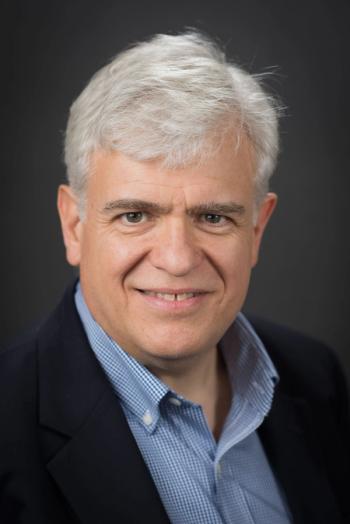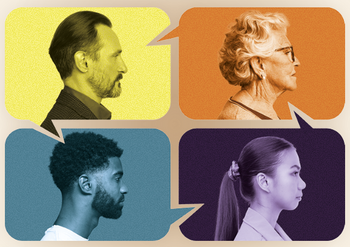
- MHE September 2022
- Volume 32
- Issue 9
Suicide Prevention: A New Phone Number to Call But It's Hardly a Cure-All
The new 988 hotline may help more people get help and steer crisis care toward mental health interventions. But many obstacles to getting access to mental healthcare before or after a crisis remain.
911 has been successfully ingrained as the number for Americans to call in case of a fire or a public safety or medical emergency.
Now public and mental health officials are hoping that 988 becomes just as well known and automatic in situations where people are suicidal or experiencing severe emotional distress. Launched on July 16, 988 is replacing 800-273-TALK as the country’s suicide prevention hotline. Callers are connected to counselors at about 180 crisis centers in the U.S.
The advent of the 988 number is being heralded as a new chapter in the checkered, underfunded history of “crisis care” in the U.S. that could save lives. The hopeful picture is that a three-digit number that is easy to remember will mean that more people contemplating suicide will call and get help. Some experts see 988 as fresh opportunity to route intervention away from the police to crisis intervention teams trained to deal with people who are suicidal, with a spillover effect to other volatile situations involving mental illness. According to the National Alliance on Mental Illness (NAMI), 1 in 4 fatal police shootings between 2015 and 2020 involved a person with a mental illness.
“988 is the first step in reimagining our crisis response, but there’s more work to do to ensure everyone receives the help they need — and deserve — in a crisis,” NAMI says on its website.
Helen Newton, Ph.D., M.P.H., a Yale University School of Public Health researcher who has studied suicide and crisis intervention teams, says 988 is one of the largest investments in the federal government’s effort to revitalize crisis care. It has the “potential to transform the system in some ways,” she says. Newton cautions, though, that funding and its equitable distribution are challenges.
The less sanguine view of 988 is that it while swaps out a nine-digit phone number for a three-digit one, it leaves the deeply rooted problems of access and funding for mental health care untouched.
“Does it solve our suicide problem in the United States? It absolutely does not because we still don’t really have effective access for most people who need help with the kind of things that would cause them to call 988,” says Roy H. Perlis, M.D., M.Sc., a professor of psychiatry at Harvard Medical School and director of the Center for Quantitative Health at Massachusetts General Hospital in Boston.
“We have a nicely painted and landscaped front door,” Perlis continues. “We have signs pointing at the front door. The problem is once people walk through that front door, it’s not clear what happens next. We don’t really have the rest of the house built. We just have a very nice front door.”
Rates up
The backdrop to the creation of the 988 number is rising suicide rates in the U.S. According to statistics from the CDC, the age-adjusted suicide rate per 100,000 people rose from 11.6 in 2008 to 14.2 in 2018, a 23% increase. The CDC figures show that in 2020, 45,979 people in the U.S. died of suicide, making it the 12th leading cause of death. Fewer people in the U.S. died in motor vehicle accidents (40,698) than of suicide in 2020, and far fewer died in homicides (24,576).
In a report released in June in the run-up to the launch of the 988 number, Kaiser Family Foundation (KFF) researchers said CDC data show that the number of suicides peaked in 2018 and dipped in 2019 and 2020. The researchers note, though, that some suicides may have been misclassified as drug overdoses because of the difficulty of determining whether a drug overdose was intentional.
Although the COVID-19 pandemic has been associated with an upswing in a variety of mental health problems, researchers are still figuring out the relationship between the pandemic and
suicide rates
The overall trend in suicide merits attention but obscures how uneven suicide deaths are across age, race and geographic categories. For example, in 2020, the suicide rate among American Indians and Alaska Native people was 23.9 per 100,000 compared with 16.8 among White people, and the rates among Black (7.7 per 100,000) and Hispanic people (7.5 per 100,000) were less than half the rate among White people, according to the KFF researchers. As the researchers noted, although women are more likely to attempt suicide, the male suicide death rate is four times higher than the female suicide death rate (22.0 per 100,000 versus 5.5 per 100,000 in 2020). Suicide death rates are consistently lower in metropolitan areas than in rural areas.
The eight states with the highest suicide rates have large rural areas: Alaska, Colorado, Idaho, Montana, New Mexico, Oklahoma, South Dakota and Wyoming, which had highest rate in 2020, 30.5 per 100,000 people.
A doubling
The Federal Communications Commission proposed the 988 number in 2019 and the National Suicide Hotline Designation Act was signed into law by then-President Donald Trump a year later. The number is new but otherwise, it is utilizing the call centers and other features of the existing National Suicide Prevention Lifeline program, which was created in 2005. According to a December 2021 report from the Substance Abuse and Mental Health Services Administration (SAMHSA), the Lifeline program has a network of 180 independently operated and funded local call centers, three Spanish language centers and nine national backup centers.
The report says Vibrant Emotional Health, formerly the Mental Health Association of New York City, is the system’s administrator. The version of Vibrant’s 2020 annual report on its website lists $46 million in revenues from government contracts but does not break it down further. National suicide prevention and disaster services are listed as $22.9 million program expense in the organization’s 2020 annual report, an increase of about $10 million from 2019.
Data collected from a sample of a subset of the 90 centers in 2020 showed that about 1 in 4 callers had experienced thoughts of suicide (suicide ideation) in the past 24 hours, 4% were assessed as being at immediate risk and suicides were in progress during 0.9% of the calls. Extrapolating from that subset, SAMHSA estimates that in 2020 just over 340,000 people called with suicide ideation, nearly 61,000 were at imminent risk of suicide and about 13,600 people (or their families or someone who was with them) called when a suicide attempt was in progress.
The SAMHSA report says the Lifeline call centers received 1.8 million calls in 2020, with an answer rate of 85%. The program started a chat service at some centers in 2013. Of the 1.4 million chats initiated in 2020, the answer rate was 30%, according to SAMHSA. The report mentions that a new chat service program was started in 2020 that “allows for a more reliable view of overall demand.” The Lifeline program also started fielding texts in August 2020; the SAMHSA report says the answer rate was 56%.
Without “proper resourcing,” the report says, the supply-demand gap of the Lifeline program is likely to worsen with the 988 number. The estimates vary, but according to a midrange projection, the volume of encounters with the Lifeline system is expected to more than double to 7.6 million, partly because people may start calling 988 instead of 911 as well as 988 being easier to remember than 800-273-TALK.
The money to pay for all of this comes from a hodgepodge of federal, state, local and private sources. The SAMHSA report said if the contacts with the program go up as much as predicted because of 988, then the centralized network operations (including money for operation of backup centers) will need $110 million in federal funding annually and the local crisis centers, a total of $560 million, money that will come the federal government and a combination of other sources. The legislation that set up the 988 number contemplated states collecting state-level cell phone fees to help pay for the centers, according to the SAMHSA report.
The federal outlay this fiscal year for the Lifeline system was $282 million, which included an allocation of $180 million in workforce funding from the American Rescue Plan Act of 2021.
The care cascade
So much for what Perlis calls the “front door.” What happens after people call? According to Newton, the Yale researcher, the “care cascade” typically follows a pattern of about 80% of the callers being managed over the phone with motivational interviewing and other strategies. Between 10% and 20% need an in-person response and 3% to 5%, “stabilization,” which means the person needs to be taken somewhere — a hospital emergency department, a residential facility with crisis beds — for observation and perhaps further treatment. Newton’s research has focused on the 10% to 20% slice that needs an in-person response.
Traditionally, police have been the responders. But in the 1980s, the Memphis Police Department launched a pilot project to train officers how to deal with people having a mental health crisis. That sowed a seed that led to the creation of crisis intervention teams consisting not of police officers but of nurses, social workers, peer volunteers and others.
In many instances, those teams were created by the community mental health centers that were established in the 1960s as part of the policy to close large psychiatric hospitals and move people with mental illness into the community. Newton says a response from a crisis intervention team instead of the police can lead to treatment rather arrest and frames the episode as a mental health crisis rather than a public safety one. Although there is little public awareness of these crisis intervention teams, some programs are thriving and enjoy at least local recognition and high regard.
The CAHOOTS (Crisis Assistance Helping Out on the Streets) program, run by the White Bird Clinic, a community health center in Eugene, Oregon, is an example. “Over the course of more than 30 years, CAHOOTS has earned the trust of pretty much all parts of the Eugene community,” said a glowing report about the program published in Health Affairs last year.
Newton and her colleagues, Tamara Beetham, M.P.H., and Susan Busch, Ph.D., who are also at Yale, reported findings from a cross-sectional study of the crisis intervention teams and their availability on a county-by-county basis in JAMA Network Open in July. The (sort of) good news: The vast majority (88%) of U.S. residents reside in a county with at least one facility that has a community intervention team. Of course, one team in a populous county will be spread thin.
But the research by Newton, Beetham and Busch also found that nearly half (1,512 of 3,142, or 48%) of the counties had no facility with a community intervention team. Those counties tended to have more uninsured people than the counties with teams. They also tended to be more rural and have higher suicide rates. This map is a familiar one to Newton: “The distribution follows a pattern similar to a lot of other mental health treatment access-type studies where, on the coasts, you’re usually pretty good. But then once you move into the interior of the country, into the more rural counties, there’s lots of areas that have limited access.”
The crisis intervention teams are coming into some federal funding. The American Rescue Plan included $15 million in grants to start teams and enhanced Medicaid funding to help with operations. In addition, some the block grant funding for mental health program in the Bipartisan Safer Communities Act of 2022 may reach the crisis intervention teams, says Newton.
More money
Perlis wrote the editorial accompanying Newton’s JAMA Network Open study. In it he lauds 988 and the effort “to ensure a single point of entry for people in crisis and to begin to bend the curve on suicide.” But in an interview with Managed Healthcare Executive®, the praise quickly gave way to expression of frustration with the lack of access to effective treatment for depression and substance abuse, both of which are associated with suicide. Some of his comments are directed at insurers.
“Let’s say you call 988. You’re in crisis,” he begins. “OK, so far, we’re managing the situation. A crisis team goes out and evaluates you and determines you need hospitalization. Well, you land in an emergency room, where you could sit for many hours or even days because we don’t have enough hospital beds. And then we discharge you and can’t get you into psychiatric treatment for weeks to months. It looks like your health plan has an extensive network (of providers). But in fact, none of them are taking new patients. So again, you’ve made it to the front door. You’re ready for help. You need help. A crisis team says, yep, this person needs help. It’s everything that happens next where I think we’re still struggling.”
Perlis says teletherapy is a way of providing care to more people cost effectively, although he is concerned about whether the quality of the care might suffer and wants to see research into the question. He also sees access to care benefiting from mental health’s version of “care extenders” — health coaches and the like.
Staid approaches are also been part of the obstacle course that needs to be removed,” in his opinion.
“In many settings, we provide care the same way we did two decades ago,” says Perlis. “You go see as a psychotherapist and you meet with them every week for the next two years. And we call that ongoing treatment. But for some people, six sessions would work, or 12 sessions. And for some people, group interventions.”
But Perlis says innovation and technology make up just one of two major pieces of the puzzle. The other one?
“I hate to say it, but someone has to spend more money supporting mental health care.”
Many people at the community mental health centers are doing their best, but the centers suffer from chronic underfunding, in his view. Perlis says people with health insurance who can’t afford to pay out of pocket can be effectively shut out of mental health care. “You can spend your day making phone calls and everybody’s practice is full. These ghost networks are a huge problem.”
As head of the Center for Quantitative Health at Mass General, which is focused on precision medicine and the use of large data sets, Perlis is no stranger to all the data-depedent ideas and projects that many people beieve can vault healthcare, including mental healthcare, into a brighter future.
“I spend most of my time trying to come up with high-tech solutions for mental health. But in the middle term, the near-to-middle term, it’s really just about investing more in mental healthcare.”
Peter Wehrwein is managing editor of Managed Healthcare Executive®.
Articles in this issue
about 3 years ago
Emerging Industry Leaders: Joyce Chan Russell of Priority Healthabout 3 years ago
Emerging Industry Leaders: Mairéad McInerney of AmeriHealth CaritasNewsletter
Get the latest industry news, event updates, and more from Managed healthcare Executive.





















































